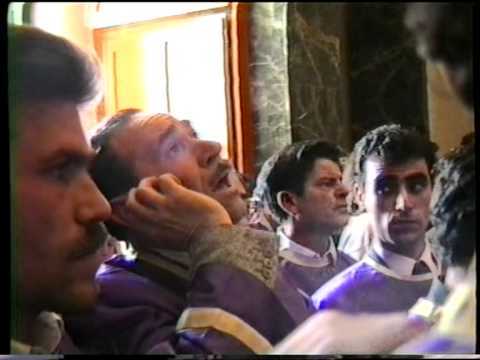Ladata or Lamintanza
Street View (if present)
Street View is only available with Google Maps.
Description
Ladata or Lamintanza
Property included in the Register of Intangible Heritage of Sicily (REIS)
----------------
Technical sheet prepared by: Region of Sicily - Department of cultural heritage and Sicilian identity - CRicd: Regional center for inventory, cataloging and documentation and Sicilian regional film library
No. Prog.
183
Bene
Ladata or Lamintanza
Book
REIS - Book of Expressive Practices and Oral Repertoires
Approval date
22-05-2014
Category
Polyvocal repertoires
Province
Caltanissetta
Location
Common
Caltanissetta
Local denomination
Chronological News
La The date, is a form of lament that was born between the thirteenth and sixteenth centuries and originates from medieval mourning. It is a literary composition, generally written in verse, which expresses suffering. Born as a religious song but soon became an outlet also on the political and emotional level, it is usually anonymous and with strong popular intonations and often lacks metrics and musical structure. With the domains that have alternated in Sicily, even the lament has changed from domination to domination, mixing the local rhythms with those brought by the colonizers.
recurrence
Annual
Data
Holy Week
opportunity
On the occasion of the procession of the Black Christ
Function
Devotional
Actors
Foliarists
Participants
Community of the faithful
Description
The execution takes place on Good Friday during the procession of the Lord of the City, the Black Christ, which crosses the entire historic center of the city. It is by the Foliarists (gatherers of bitter herbs), historical and spiritual descendants of the first who found the Crucifix, sing the The Intention. That of Good Friday in Caltanissetta develops in an archaic dialect built on a suggestive Arabic trend, which expresses the suffering for this day of sadness. The melody is performed only by male voices and the solo part is performed by three singers alternately: the first two, called before purchasing, e secunna vuci for the order of entry, they play a melodic line of descending trend by joint degrees; the third, falsity, concludes the musical verse with a long vocalization in a descending octave range. The part of the choir, whose number of participants is indefinite because everyone can participate, simply reinforces the final parts of the melodic tracks of the soloists.
Catalog Sheet
REFERENCES
Macchiarella, Ignatius. 1993. The songs of the Holy Week in Sicily. Palermo: Sicilian graphic arts.
CRICD. 2004. Bulletin of the tape library. Events and documents. Curated by Orietta Sorgi. Palermo: CRICD.
Sitography
Filmography
Discography
Footnotes
Author Card
Laura Mattaliano
Go to Google Maps
Send a notice to the publisher
[contact-form-7 id="18385"]



